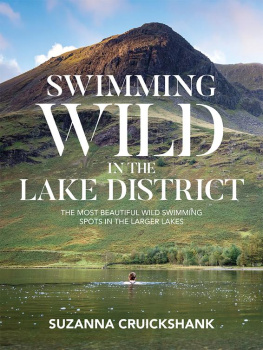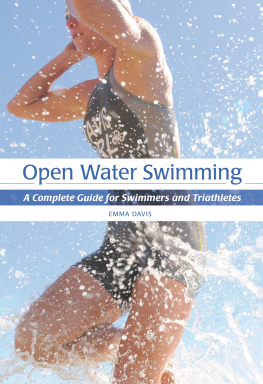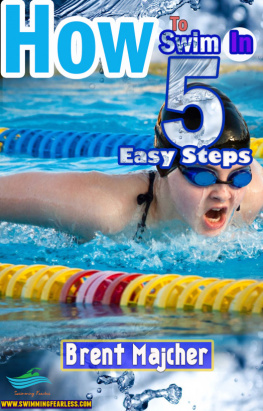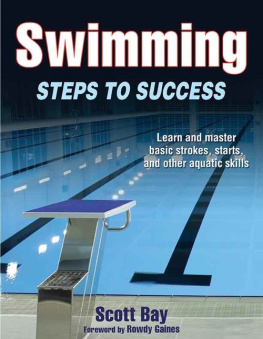
ANNA KATZ &
SHANE ROBINSON

Copyright 2018 by Anna Katz and Shane Robinson
All rights reserved. No part of this book may be reproduced or utilized in any form, or by any electronic, mechanical, or other means, without the prior written permission of the publisher.
Published by Skipstone, an imprint of Mountaineers Books
Skipstone and its colophons are registered trademarks of Mountaineers Books.
Printed in China
First edition, 2018
Copyeditor: Kris Fulsaas
Design: Heidi Smets
Cartographer: Pease Press
Cover photograph: Top: iStock/Goami; Bottom: Methow River at Mazama ()
Back cover photograph: Falls Creek/Lazy Bear Falls ()
All photos by the authors unless credited otherwise.
Library of Congress Cataloging-in-Publication Data is on file
ISBN (paperback): 978-1-59485-999-1
ISBN (ebook): 978-1-68051-000-3
Printed on FSC-certified materials.
Skipstone books may be purchased for corporate, educational, or other promotional sales, and our authors are available for a wide range of events. For information on special discounts or booking an author, contact our customer service at 800.553.4453 or .
Skipstone
1001 SW Klickitat Way, Suite 201
Seattle, Washington 98134
206.223.6303
www.skipstonebooks.org
www.mountaineersbooks.org
Please use common sense. It is incumbent upon any user of this guide to assess their own skills, experience, and fitness; to assume responsibility for their own actions and safety; and to recognize the inherent dangers in Northwest lakes, rivers, and other water environments. Changing or unfavorable conditions in weather, waterways, river flows, roads, trails, etc., cannot be anticipated by the authors or publisher but should be considered by any outdoor participants, as swimming locations may become dangerous or water unstable due to such altered conditions. Likewise, be aware of any changes in public jurisdiction, and do not access private property without permission. The publisher and authors are expressly not responsible for any adverse consequences resulting directly or indirectly from information contained in this book.
LIVE LIFE. MAKE RIPPLES.
For our parents, Paul Burstein and Florence Katz
Burstein and George and Julie Robinson:
thanks for teaching us to swim
CONTENTS

Summer vibes at Dougan Falls ()
INTRODUCTION
WASHINGTON STATE IS HOME to more than 8000 lakes and approximately 70,439 miles of river. Most of these rivers are named for the Native American tribes that lived on their banks: the Klickitat, Cowlitz, Chehalis, the Wenatchee, and Skagit, to name just a few (see ). Water is everywhere in Washington, whether its saltwater providing a port to a city, freshwater flowing through a valley, or rain falling from the sky.
The Pacific Northwest attracts, along with techies and coffee drinkers and musicians, many die-hard outdoorspeople who are determined to be outside, no matter the weather. We wont let the rainnor seasonal affective disorder or urban livingstop us. To that end, we drive up into the mountains to ski and snowboard, ride commuter bikes in downpours, and hike on dripping, mossy trails despite howling wind.
Many people get outside, rain or shine or rain. But, to generalize, everyone here lives for the summer, and for good reason: summertime in this region is absolute paradise. Many a tourist has decided to move here after visiting in July or August. From late June through September, depending on the year, the sky is a boundless blue, the grass stays green, the temperature is happy-place ideal, and theres always some gorgeous body of water to swim in wherever you happen to be.
We like to swim, and a few years ago, we were looking for a guidebook to swimming holes in the Pacific Northwest. Many wonderful books mention swimming holes or explore hot springs but, by George, we couldnt find any whose sole mission was to specifically educate and direct us to swimming holes. So we decided to write our own.
For us, swimming in these outdoor locales is not simply a hobbyit is a lifestyle and a philosophy. Its not about swimming laps or burning calories; we want to be out in the natural environment and to play like the fish, otters, and whales that are our close relations. We are in it to have a good time. We want to live slow.
With this philosophy in mind, we wrote this simple guidebook that could live in the glove box of your familys minivan, on the coffee table next to your roommates oversize glasses and empty can of PBR, or in the pocket of your hard-core-trekkers backpack along with the gorp. This book is for parents who want a nice place to safely entertain their kids while spending a day in the water. Its for outdoor recreationists who are looking for an activity when the ski slopes are closed or the weathers too hot for a climband maybe for those who want to jump off a cliff or rope swing into the water but dont know where to go. Our book is for young folk looking for a good time and a place to chill. Its for older folk also looking for a good time and a place to chill, albeit with perhaps more modest swimwear.
This book is for anyone who likes to be in the water.
The Traditions of Living by Water
The lives of Pacific Northwest Native Americanslike the lives of all peoplehave revolved around water, as well as the animals within it, for millennia. Salmon is of great cultural and dietary importance, and if you grew up around here, theres a good chance you studied the incredible migrations of these iconic fish from rivers, lakes, and streams to the ocean and back again. Many of us who now live here can credit the arrival of European settlers, missionaries, and the logging industry; this change was a calamity for those whose ancestors had occupied the area for thousands of years. Today, Washingtons twenty-nine federally recognized tribes (not all tribes are recognized) hold reservation land around these same rivers, Puget Sound, and the Pacific coast. The names of our towns, mountains, forests, and bodies of water are good cues to the long history of this region. Whether your ancestors crossed the Bering Strait twenty thousand years ago or you arrived on a plane last week, please keep in mind that we all share this land and the responsibility for its care. For more information on Washington tribes, check out the websites of the Duwamish Longhouse and Cultural Center and the Burke Museum of Natural History and Culture (see ).
WHAT MAKES A GREAT SWIMMING HOLE?
Because the great state of Washington has so much water, this book could have had a hundred thousand entries, but ultimately we had to limit ourselves. Siouxon Creek, Racehorse Creek Falls, the Mazama swimming hole on the Methow River, and Mountain Lake on Orcas Island are a few of our favoritesbut there are so many others in this book that we love.
We took a few years to investigate swimming holes both nearclose to our homes in Seattle, like Denny Blaine Beachand far, like Colchuck Lake in the Enchantments and Palouse Falls south of Spokane. We went for dips in lakes and rivers and oceans, way up in the mountains or just a short bus ride from downtown Seattle. We even hunted north and south, in Oregon and British Columbia, as well as east and west, in Florida and Hawaii, just for the comparison. We dedicated a considerable amount of time to the water, looking for the important information:










